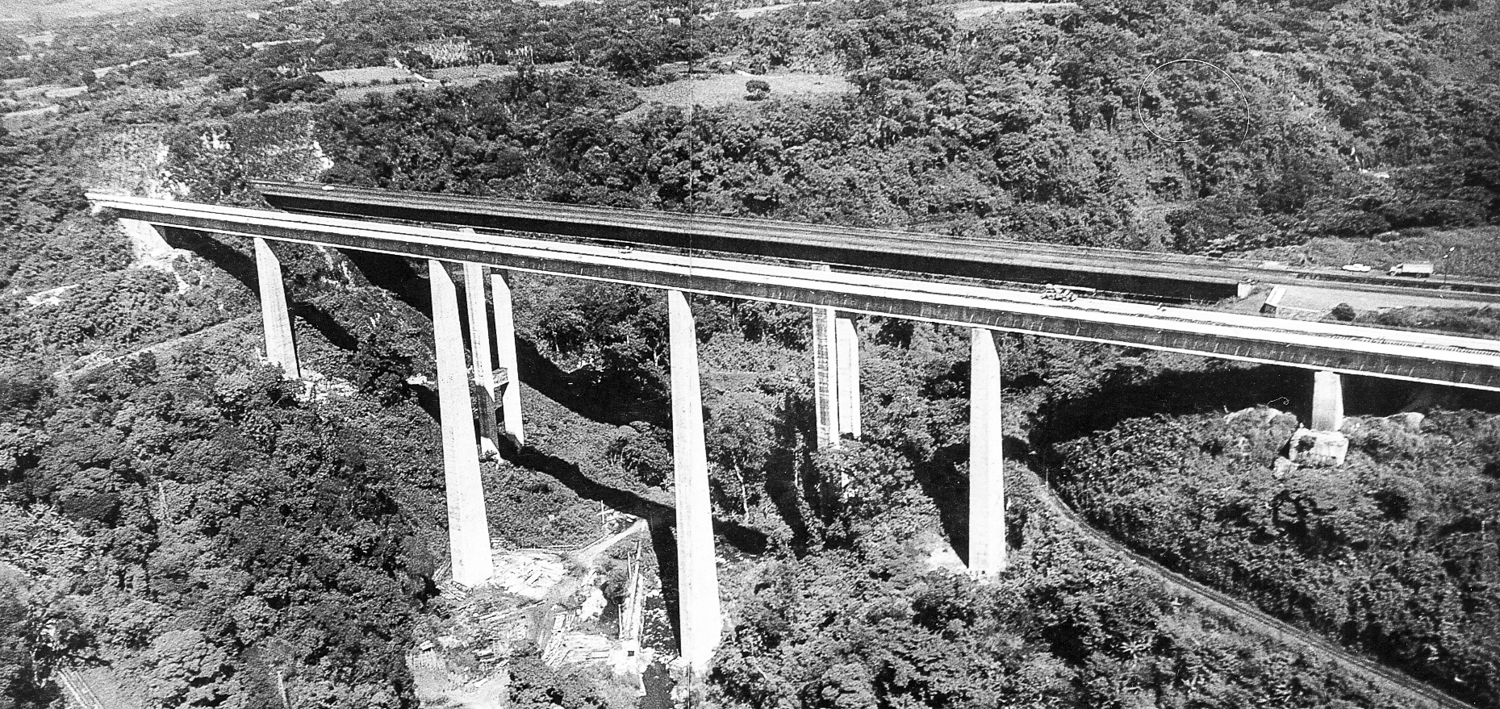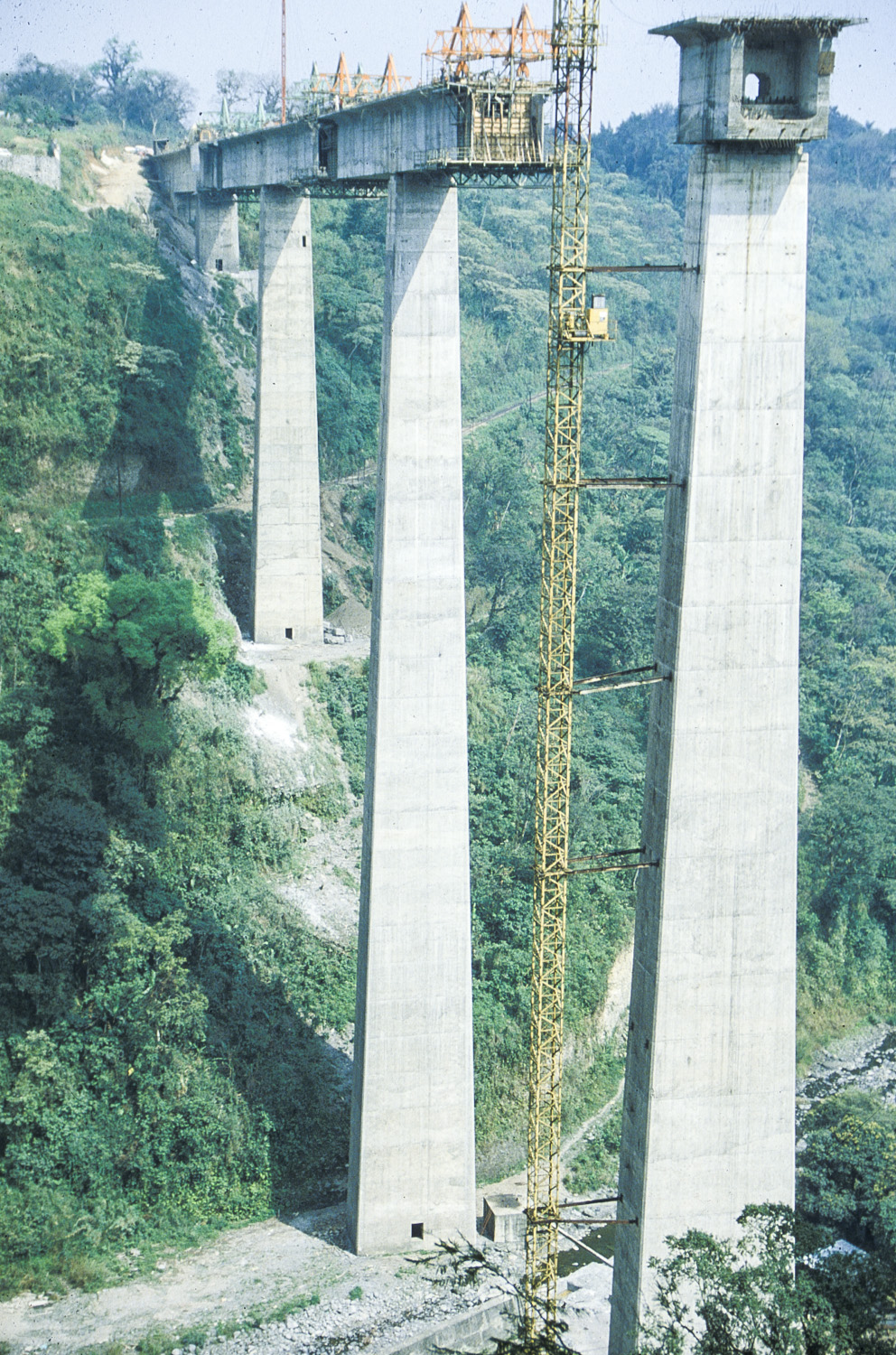The Mexico-Veracruz rail crossing over the slope at Metlac has required a 430 meter long viaduct being built with 112 meter high piers, formed by a girder of 6 spans 65+85+90+85+70+35, with a height of 6.50 meters, that is 10 meters wide for two railway tracks.
The most determined problem of the project has been the seismic activity effect, due to the high seismic rate in the area, an effect which is worsened since the Metlac slope is considered to be a possible active fault.
These problems have determined the morphology of the bridge to a great extent: Firstly, the deck’s continuous girder was interrupted by a supported stretch in the main span, in such a way that if there was any movement of fault in the bottom of the slope, the viaduct would have the utmost capacity possible against distortion. Secondly, it was necessary to fix the high piers lo the deck, both transversely as well as longitudinally. However, it was al50 necessary to avoid the deck turning transmissions to the piers in order to avoid any excessive torsions in them.
This was cue to the fact that a lack of deck continuity in the main span would produce very severe transverse distortions. lt was also necessary to build the deck in the abutments in order to fix it longitudinally and transversely by using operative anchorings in the ground.
The viaduct was built by successive cantilevers which left symmetrically from each pier by building the deck into them temporarily. The construction of the section that is simply resting on the main span, this being 30 meters long, was done by provisionally blocking the halving joints and building each semi-section with successive cantilevers by prolonging the cantilever of the rest of the span by temporary prestressing.
Once the crown construction was achieved, the cables of the supported section are prestressed, the top temporary cables are released and the joints are unblocked.
The bridge was completed in 1984.
– Concrete and Steel No. 180 (1991)




